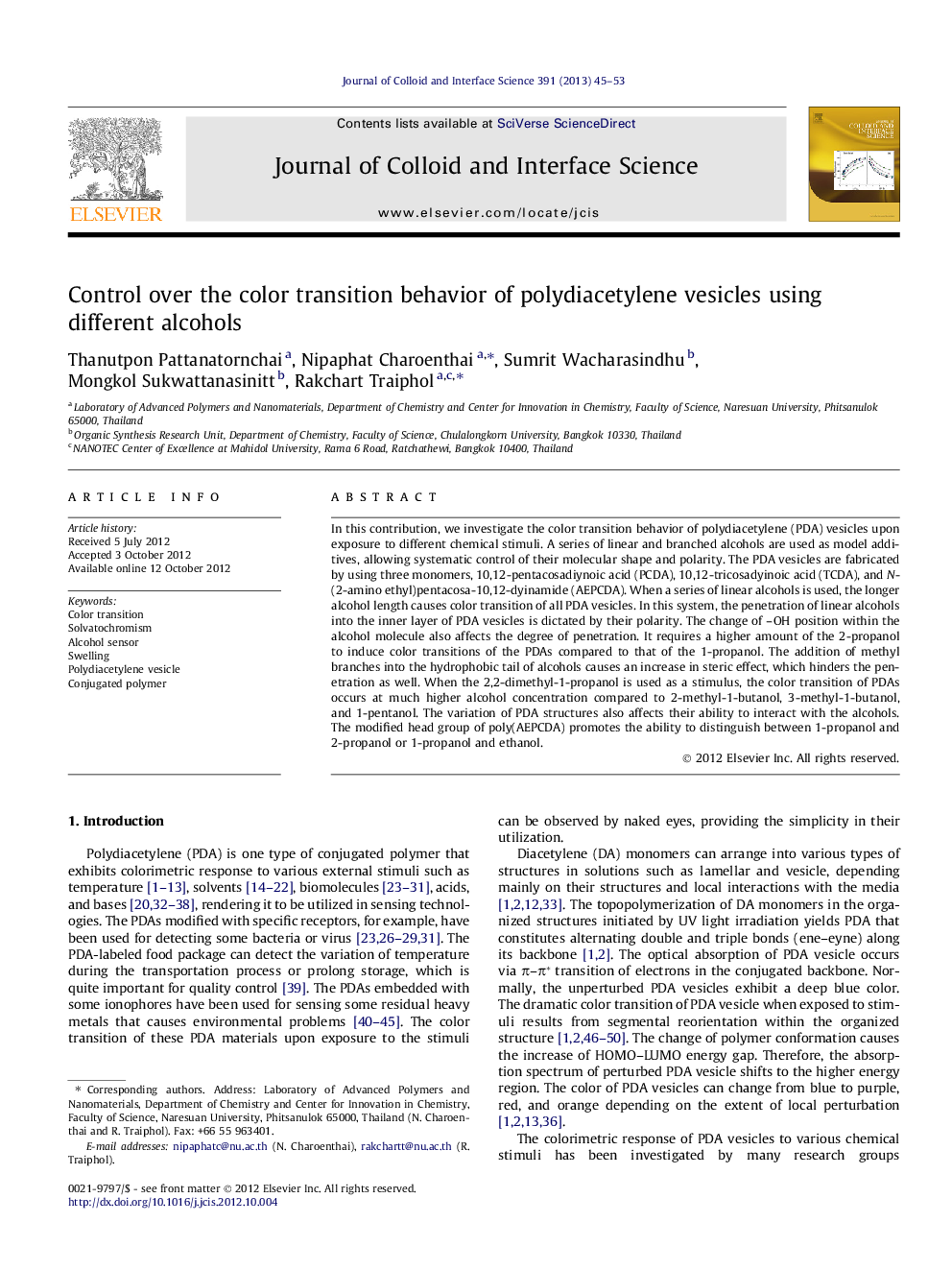| Article ID | Journal | Published Year | Pages | File Type |
|---|---|---|---|---|
| 607902 | Journal of Colloid and Interface Science | 2013 | 9 Pages |
In this contribution, we investigate the color transition behavior of polydiacetylene (PDA) vesicles upon exposure to different chemical stimuli. A series of linear and branched alcohols are used as model additives, allowing systematic control of their molecular shape and polarity. The PDA vesicles are fabricated by using three monomers, 10,12-pentacosadiynoic acid (PCDA), 10,12-tricosadyinoic acid (TCDA), and N-(2-amino ethyl)pentacosa-10,12-dyinamide (AEPCDA). When a series of linear alcohols is used, the longer alcohol length causes color transition of all PDA vesicles. In this system, the penetration of linear alcohols into the inner layer of PDA vesicles is dictated by their polarity. The change of –OH position within the alcohol molecule also affects the degree of penetration. It requires a higher amount of the 2-propanol to induce color transitions of the PDAs compared to that of the 1-propanol. The addition of methyl branches into the hydrophobic tail of alcohols causes an increase in steric effect, which hinders the penetration as well. When the 2,2-dimethyl-1-propanol is used as a stimulus, the color transition of PDAs occurs at much higher alcohol concentration compared to 2-methyl-1-butanol, 3-methyl-1-butanol, and 1-pentanol. The variation of PDA structures also affects their ability to interact with the alcohols. The modified head group of poly(AEPCDA) promotes the ability to distinguish between 1-propanol and 2-propanol or 1-propanol and ethanol.
Graphical abstractFigure optionsDownload full-size imageDownload high-quality image (154 K)Download as PowerPoint slideHighlights► Colorimetric response of three polydiacetylene vesicles to chemical additives is investigated. ► Polarity and shape of the additives are varied. ► The increase in additive polarity drives the color transition. ► The presence of methyl branches in the additive structures hinders the color transition. ► The ability to distinguish stimuli depends on the polydiacetylene structures.
